A Winter Ritual
To truly experience Korean natural spas, winter may be the best season.
Korea may be a land of four seasons, but the winters somehow feel the longest. Perhaps winter’s frigid temperatures and chapping winds are necessary sacrifices for the peninsula’s perfect autumns and springs.
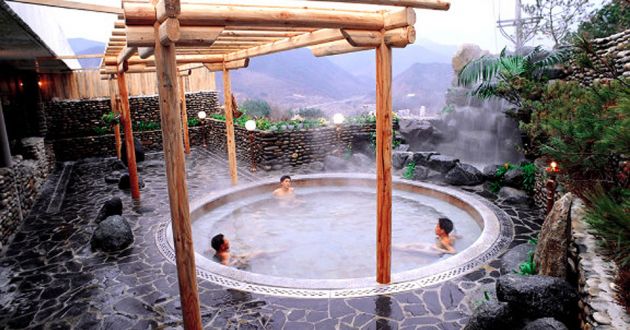
But the next time winter’s cold drives you indoors, consider doing the following: sink chin deep into a hot bath infused with ginseng or jasmine, get scrubbed head to toe and emerge with soft new skin, and then fall asleep atop a floor whose heat permeates your entire body.
This is how to truly experience Korean natural spas.
When Feeling Good is Good For You
There are a number of health benefits attributed to mineral hot springs and saunas.
Immersion in hot and cold spring water helps the body absorb natural minerals like magnesium, calcium and sodium while it purges harmful toxins through perspiration.
The treatment of disease by water is called balneotherapy, and it’s an ancient practice in both the east and west.
In Korea, many people flock to natural hot springs to treat minor eye and skin conditions. Studies have found that spa treatments can reduce chronic pain and treat rheumatoid arthritis, fibromyalgia and even mild depression.
Beyond their therapeutic value, spas are also popular among Korean couples and families as a fun way to spend a few hours together outside the home.
If you’ve considered indulging in your own trip to experience Korean natural spas, but don’t know the options or the protocol, here are three affordable destinations that run the gamut – from the modest mogyoktang bathhouse to the full-service jjimjilbang.
Afterwards, I’ve assembled a set of helpful tips so you can experience Korean natural spas at their best.
#1: The Easy Escape – Hongdae’s Happy Day Spa
One of the best options for a Korean spa neophyte, and to experience Korean natural spas in Seoul, head to Hongdae’s 24-hour Happy Day Spa.
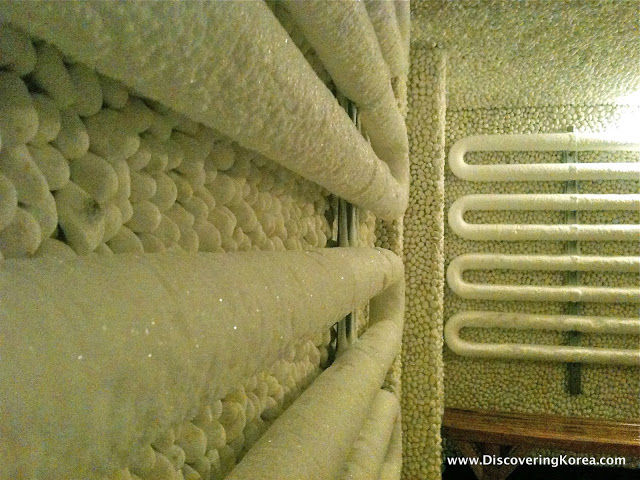
In addition to being conveniently located in one of Seoul’s most exciting neighborhoods, Happy Day Spa is your standard jjimjilbang, offering both a gender-segregated bathhouse and two co-ed floors with themed saunas and generous floor space for sleeping.
Each bathing area features three hot pools, one large cool water basin and an “event bath” filled with green tea on my visit. The periphery is lined with stand and sit open shower stations.
After switching between hot and cold baths to loosen the skin, you can also request a facial massage and moisturizing pack or a full-body scrub.
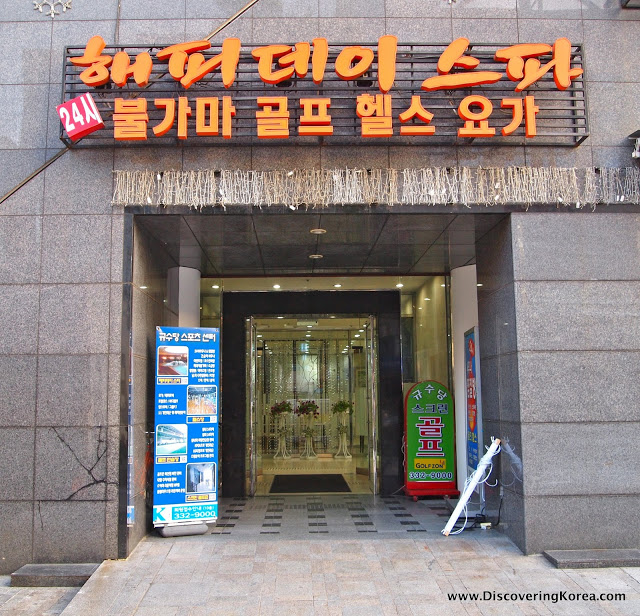
To visit Happy Day Spa’s jjimjilbang, put on the T-shirt and shorts you received upon entry, and venture downstairs. Depending on the hour, a number of guests will be sleeping or chatting quietly on the floor.
Also on site are a small arcade, a cafeteria and a smoking room. The highlights of the co-ed area, however, are the theme saunas.
There’s a charcoal and red earth hwangteo room, two huge oven-like bulgama saunas kept piping hot by pine logs, and my favorite – a refreshing “ice room” whose walls and ceiling are lined in ice crystals and white stones.
#2: A Spa Fit for a King – Icheon Spa Plus
For the Seoulite eager to leave the big city for a provincial spa package, the city of Icheon is a fine destination to experience Korean natural spas.
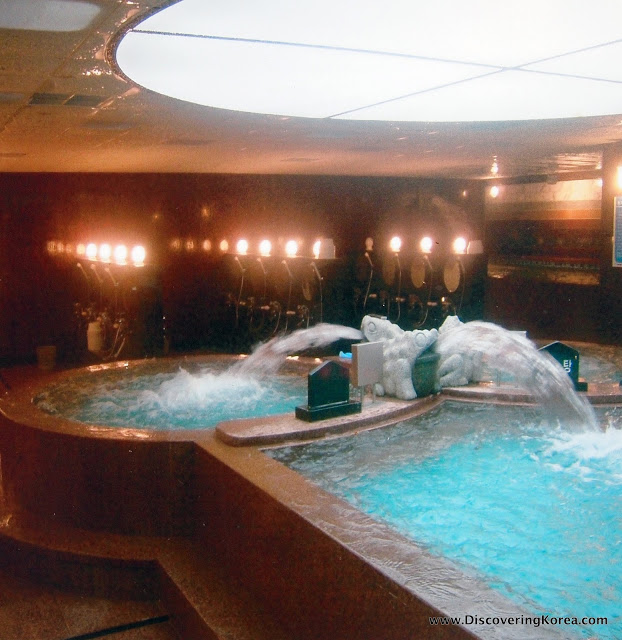
Less than one hour away by express bus in Gyeonggi Province, Icheon (이천시) is famous for its rice and ceramics, but best known as a center of Korea’s spa tradition since the time of King Sejong the Great, some 600 years ago.
Most of the city’s hot springs are centered around the Anheung-dong area. Loaded with minerals, the water’s temperature averages about 30 degrees Celsius.
Among Icheon’s biggest and best spas is Icheon Spa Plus. Opened in 2002 and located inside the Miranda Hotel, the excellent facilities can accommodate up to 5,000 people.
They include a Cheongju rice wine bath and six themed saunas. The Amethyst Room is lined in crystals and white stones, which are said to emit beneficial far infrared rays.
The Charcoal Room’s calcium, sodium, iron, magnesium and manganese are said to help maintain the body’s electrical balance, while Spa Plus’s bulgama oven is said to remove the toxic heavy metals that accumulate in the body… or maybe it simply melts them away?
Although some of Spa Plus’s baths and saunas are gender segregated, others are co-ed and family-friendly. A large indoor and outdoor water park with slides is popular with children, as are the resident “Doctor Fish.”
Native to China and Turkey, the small fish (Garra rufa) reside in cool mineral water and nibble happily on the dead skin cells found on human feet. It’s said that the fish are an effective treatment for various skin disorders, such as psoriasis, eczema and athlete’s foot.
#3: A Winter Wonderland – Suanbo Park Hotel
Another region of Korea that’s famous for its oncheon (온천), or natural hot springs, is Suanbo (수안보).
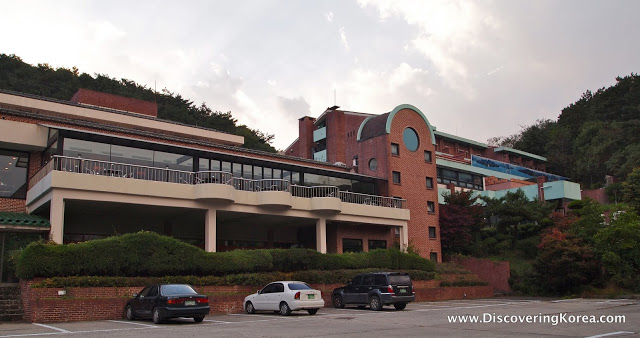
Located just 21 kilometers north of Chungju City (충주시) in North Chungcheong Province, it’s a place where everything seems to bear the name “water.”
You can walk along “Water Vessel Road” in “Hot Springs Village.” Even the “su” of the town’s name comes from the Chinese character for water.
I guess it’s fitting that Suanbo’s residents are proud of their slightly alkaline (pH: 8.3) water, since it’s purity and health benefits were documented as early as in the Goryeo Dynasty (918-1392). Despite containing useful minerals like calcium, sodium and magnesium, Suanbo’s water has virtually no smell, color or taste.
These days, Suanbo is a favorite winter destination for Koreans who want to spend the day on the ski slopes and their evenings bathing in one of the village’s 20 operating hot springs.
In the 1970s, a building boom created a tourism village, and its funky charm remains. Among them, the Suanbo Park Hotel is one of the best.
While its gender-segregated facilities are more modest than Hongdae’s Happy Day Spa or Icheon’s Spa Plus (just two large indoor pools and one dry sauna), its hilltop location boasts gorgeous views that can be enjoyed from an outdoor pool.
On a clear evening, the steam rising off the water is the only thing that obscures the moon and stars. It’s truly a great way to experience Korean natural spas.
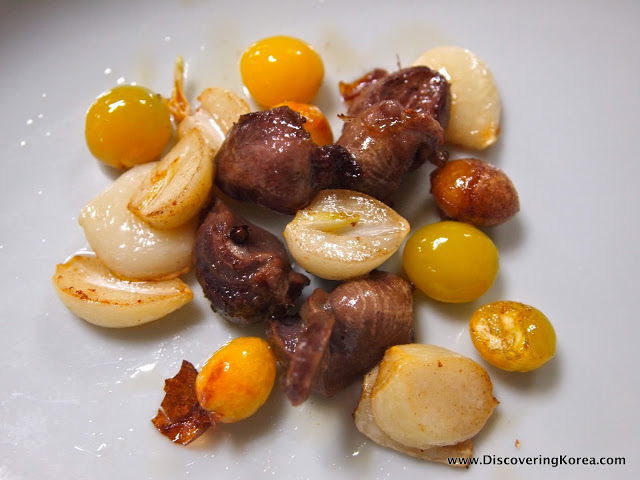
Finally, Suanbo hosts a hot springs festival each October that’s become popular with Japanese visitors.
At any time of year, however, consider eating off the local menu – rabbit and pheasant. The latter is a low fat, high protein fowl with a delicious gamier flavor than chicken.
Six Important Steps:
Now that you know the basics about Korean spas, here’s a simple “how-to” for your inaugural visit.
- Upon entering and paying the entrance fee (usually between 5~10,000 won), you’ll be given a main locker key. If there are jjimjilbang facilities, you’ll also receive shorts and a T-shirt.
- Before entering the locker room, remove your shoes and place them in the shoe locker (sometimes this step will precede #1. If so, you might exchange your shoe locker key for a main locker key).
- Inside the locker room, remove your clothes (no swim suits allowed!) and take a shower before entering the pools or saunas.
- After bathing, if you plan to go to the co-ed jjimjilbang, wear the provided shorts and T-shirt.
- When you’re finished, bathe and deposit your used clothes and towel into a hamper before leaving the locker room. Give your main locker key to the main desk.
- Fetch your shoes and leave the key in the shoe locker door.
Four Important Tips:
- If you have a heart condition, high or low blood pressure, or if you’ve recently finished a large meal or consumed alcohol, you should avoid using a spa.
- Since the saunas and hot pools will make you sweat, it’s important to keep yourself hydrated. Choose water over flavored beverages.
- Scrubbing your body with salt will help speed the release of toxins and your skin feel more smooth.
- Using a cool, moist towel at the spa will help moisturize your skin.
Conclusion
There you have it, three great options and some simple instructions so you can experience Korean natural spas during the best season for it – winter!
Why not take the plunge? You’ve got a world of inexpensive comfort waiting for you!
About Matt Kelley
Matt Kelly is native of the US Pacific Northwest and is half-Korean by ethnicity. He lived in Korea for five years and has written hundreds of travel guides for Wallpaper, TimeOut, the Boston Globe and Seoul Magazine and was a host for several different variety shows on Korean radio and television.
